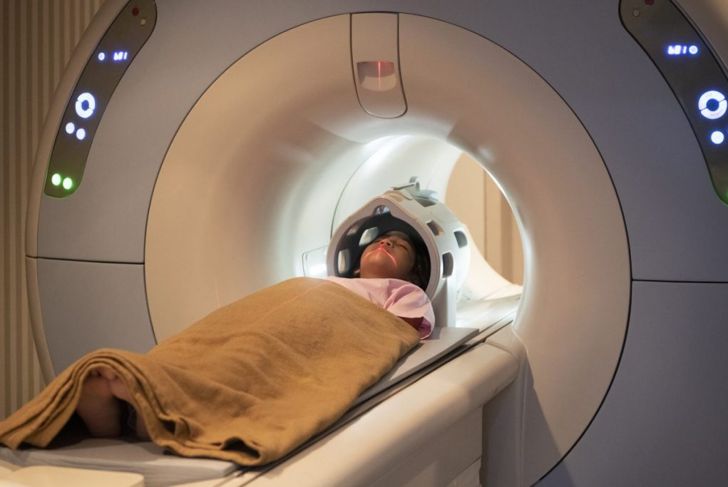Many people experience facial paralysis. The muscles in the face may sag or become too weak to maintain tension. Either side of the face can be affected by paralysis, and issues such as dry mouth, lack of tears, and loss of taste or hearing can accompany the primary symptom. There are many causes and it may come on suddenly or develop slowly. In some cases, symptoms are preceded by pain that originates in the ear.
What are the causes of facial paralysis?
Many disorders, disease, and conditions can lead to facial paralysis. A nerve travels from the brainstem through the Fallopian canal in the skull, below the ear, and then to the muscles on either side of the face. If this nerve is or damaged or swollen, facial paralysis can occur. It can also be caused by brain damage. The most common cause is Bell’s palsy, which affects 40,000 Americans each year. Bell’s palsy can appear in otherwise healthy individuals that may have undergone facial trauma.
What is Bell’s palsy?
Bell’s palsy is damage or disruption of the facial nerve controlling the muscles of the face. This interrupts all the signals the brain is sending to control the face, leading to facial weakness or paralysis. Usually, the condition only affects one side of the face. Symptoms vary from person to person, but drooping of the eyelids and corner of the mouth are typical. The symptoms reach their peak after 48 hours. Women and men are equally likely to be affected, but it appears more commonly between the ages of 15 and 60.
What infections cause facial paralysis?
Several infections can directly cause facial paralysis, including shingles, Lyme disease, and otitis media. Otitis media begins in the middle ear while shingles can begin and spread anywhere. Hearing loss is a common early symptom of these infections. Lyme disease may cause fatigue and headaches. All three infections can spread from their origin to the facial nerve. People of any age can develop an infection.
What kind of trauma causes facial paralysis?
Skull fractures can cause damage to the facial nerve and therefore cause paralysis. The facial nerve is close to the temporal bones located at the base and side of the skull near the ear. Fractures or damage to the temporal bones can cause acute facial paralysis. A transverse fracture is the most likely trauma to cause this symptom, and account for almost 50% of traumatic facial paralysis. The paralysis may occur directly after the trauma if there is damage to the nerve itself, or later due to inflammation.
How do tumors cause facial paralysis?
A tumor that forms and compresses the facial nerve in any location can result in paralysis, which may present as a progressive, twitchy form. In some cases, the tumor can mimic the symptoms of Bell’s palsy, which can lead individuals to believe this condition is causing the issue. However, Bell’s palsy should not recur, and this anomaly can alert medical experts to the actual cause. Tumors on the facial nerve are difficult to treat without causing additional damage.
How do strokes cause facial paralysis?
Many people recognize that strokes can cause facial paralysis. Strokes can result in direct damage to the brain itself. Depending on the type of stroke, brain cells can die due to a lack of oxygen in the blood or excess pressure on the cells. It takes only minutes for the brain cells to die and the resulting brain damage may be extremely difficult to treat.
What else can cause facial paralysis?
There are many other afflictions that can cause facial paralysis. Diabetes can cause significant issues if left untreated, one of which is facial paralysis. Neurosarcoidosis can lead to abnormalities forming in the brain and spinal cord that affect the facial nerve. Certain autoimmune disorders such as Guillain–Barré syndrome involve rapid muscle weakening that can advance into facial paralysis. Facial paralysis can also be present at birth if the child is affected by Moebius syndrome, which is marked by complete facial paralysis, an inability to move the eyes to either side, and lack of facial expressions.
How is facial paralysis diagnosed?
Because there are so many types and causes of facial paralysis, proper diagnosis can be an extensive process. Physical and neurological examinations can lead to a diagnosis of Bell’s palsy. Blood tests and blood sugar tests are also common. For Lyme disease and tumors, medical experts may opt for x-rays, MRIs, or CT scans. Electromyographic testing can check the muscles themselves.
How is facial paralysis treated?
The treatments are as varied as the causes. Paralysis caused by trauma or Bell’s palsy may require oral steroids to hasten recovery and strengthen the muscles. Infections can be fought with antibiotics and steroids, and medication is often prescribed for stroke-caused paralysis, as well. Surgeons generally remove tumors, and nerve grafts or muscle transfers repair the damaged nerve. Physical and speech therapy help individuals regain use of their facial muscles.
What is the prognosis for facial paralysis?
The vast majority of people affected recover completely. Those for whom the symptom is the result of an untreatable condition may have problems with paralysis for the remainder of their lives, but these cases are extremely rare. Facial paralysis as a result of Bell’s palsy or other trauma generally requires about six months of recovery time. The damage from infections and strokes have different recovery times depending on the type and severity of the issue. Physical therapy can often manage any remaining paralysis or damage and improve quality of life.

 Home
Home Health
Health Diet & Nutrition
Diet & Nutrition Living Well
Living Well More
More




















